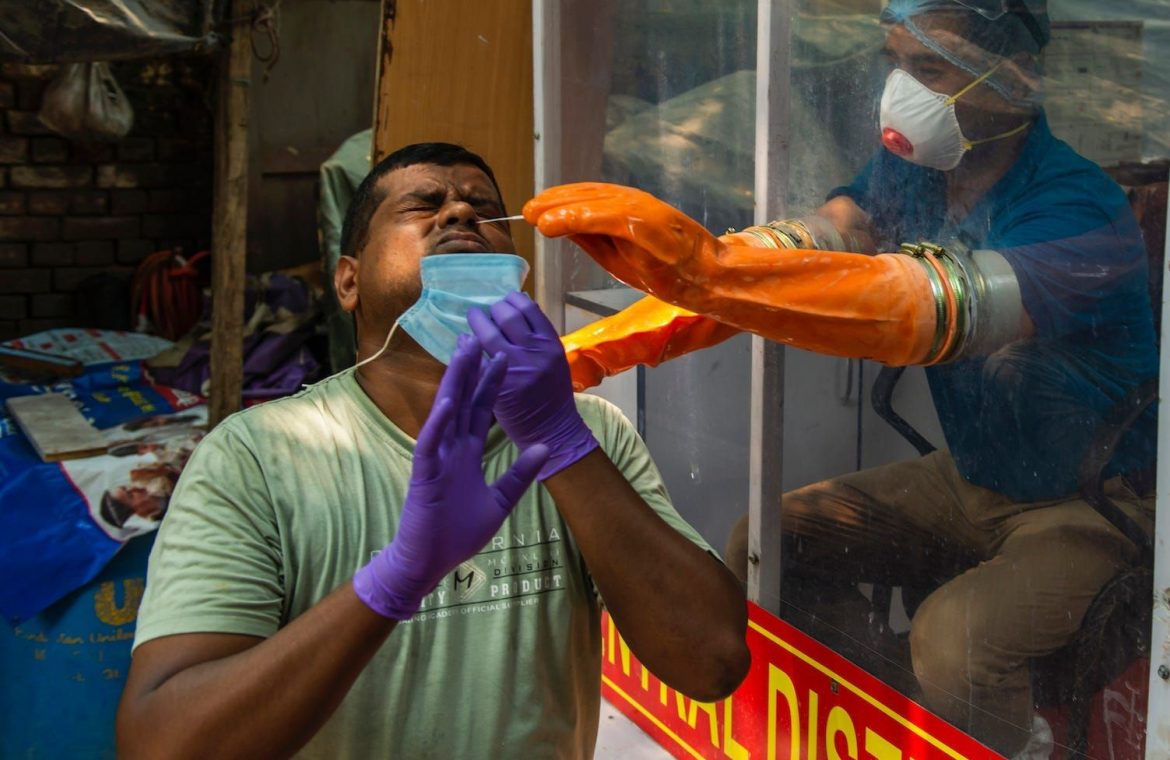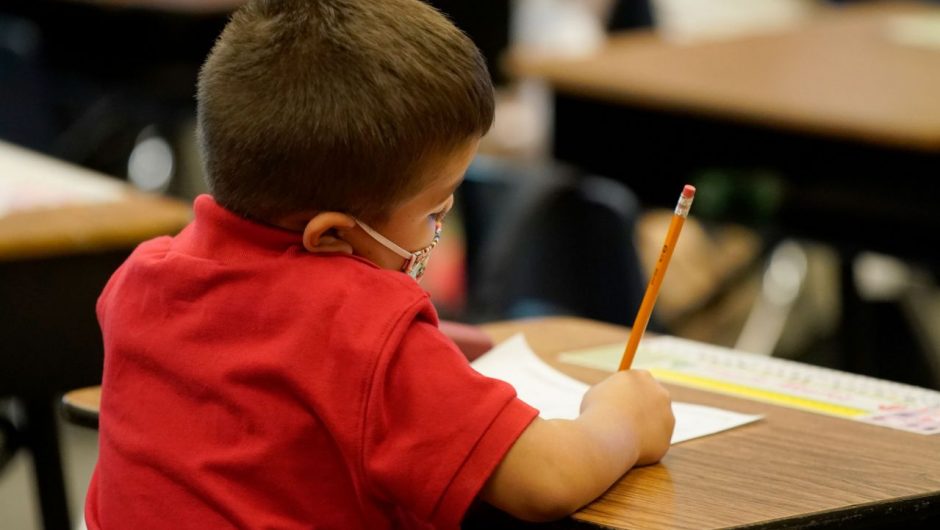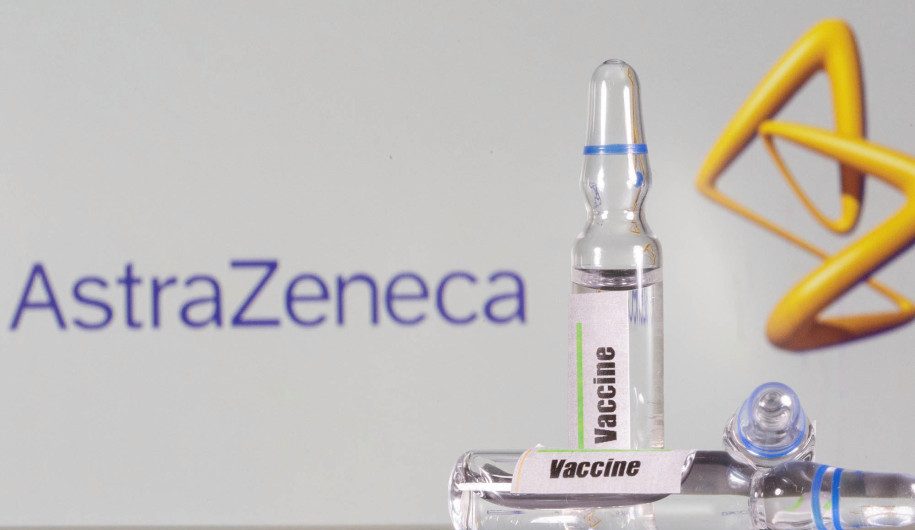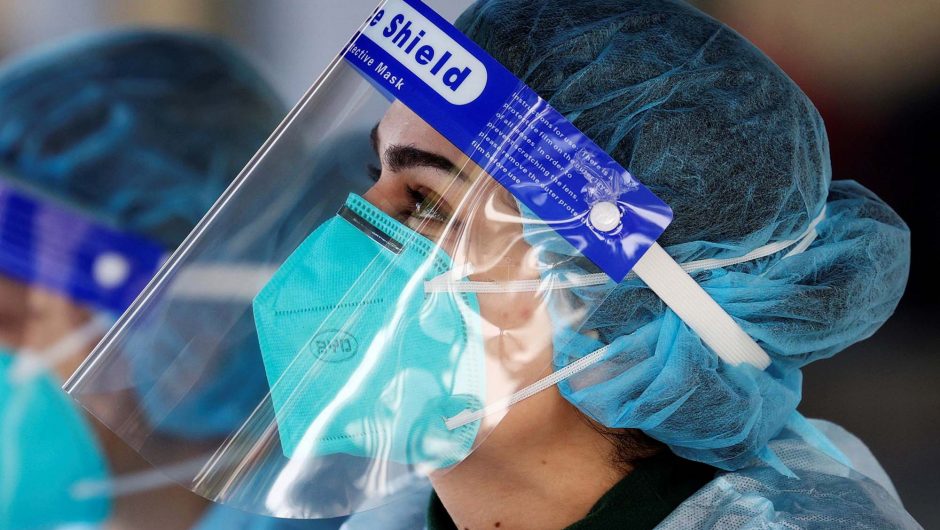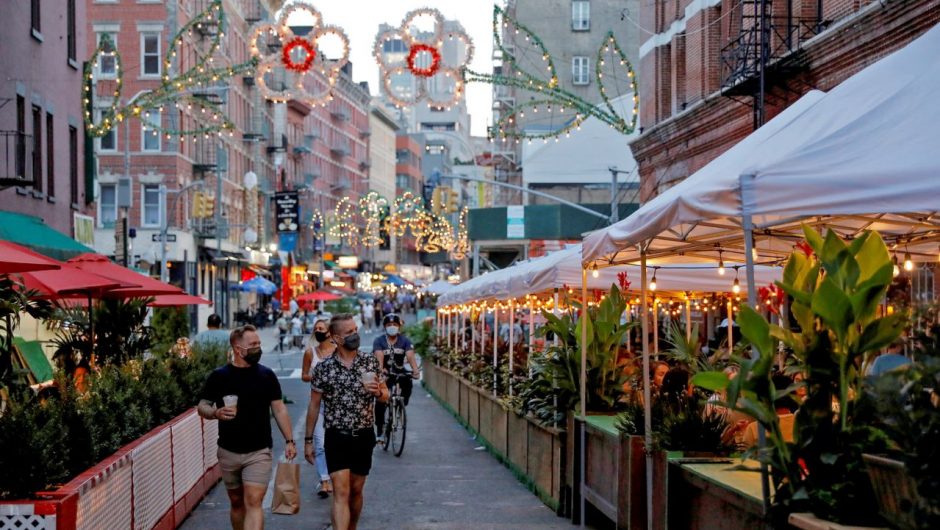A health worker takes a swab from a man’s nose through a glass shield (for safety) in New Delhi, India, on August 8, 2020. Rapid antigen tests for COVID-19 are being provided by the Indian government for free.
Pradeep Gaur/SOPA Images/LightRocket via Getty Images
Rapid, on-site coronavirus testing is generally less accurate than tests which are sent back to labs for analysis.
But rapid COVID-19 testing is still a useful screening tool, especially if it’s conducted frequently. It can be cheap, and it’s fast.
A negative rapid test result may still need to be confirmed with a lab test before a person can assume they’re virus-free.
A rapid test can’t be used as a hall pass to get close to other people, or as reassurance that you’re doing a good job preventing yourself from getting sick. The virus is still here.
Visit Business Insider’s homepage for more stories.
Related: What we know about immunity for the coronavirus
Every day, people around the world are becoming makeshift coronavirus detectives, putting long swabs into their mouths and noses, and spitting into straws.
They’re scouring for any rapid in-throat or in-nostril evidence that the novel coronavirus may be at hand — hunting for clear signs that they might have an infection of COVID-19, the disease caused by the virus.
When test results from these swabs and tubes come back negative, minutes later, some go off to play club soccer, or major league sports. Others emerge from the comfort of their cars to attend chic parties in the Hamptons, or venture to summer retreats. Starting next week, theater crowds in the UK will even take rapid coronavirus tests before attending socially-distanced showings of “Sleepless.”
But rapid diagnostic tests for COVID-19, which range in cost from a couple dollars to several hundred and take as little as 15 minutes to yield results, are not fail-safe, nor are they a free pass to live as if the virus does not exist.
Public health experts caution that rapid COVID-19 tests may only pick up about 70 to 80% of all infected people they test.
“I would still say that distancing and outdoor air are your best friends,” Michael Osterholm, director of the Center for Infectious Disease Research and Policy at the University of Minnesota, told Insider. “To me, that would provide me much more assurance that I was not going to either get infected, or infect others, than would a rapid-detection test.”
Story continues
Yet from luxe party entrances to pro sports locker rooms and vacation hotspots, gatekeepers are using these tests as a ticket to entry, briefly pausing to register a negative result before letting people go on their way.
People stand in line at a clinic in Long Beach, California offering quick coronavirus testing for a fee, on Monday, June 29, 2020.
Brittany Murray/MediaNews Group/Long Beach Press-Telegram via Getty Images
These tests would be better dispatched as crude monitoring and surveillance systems, aimed not at catching every single case of the virus and declaring people safe to party, but instead dealing with the virus’s still-rampant spread across countries around the globe.
“Point of care tests are extremely useful if you have symptomatic people, or if you’re contact tracing, or if you’re in a place like a nursing home where we’re going to be testing repeatedly,” US coronavirus testing czar Admiral Brett Giroir told Insider during a press call on Wednesday.
“You can lose a little sensitivity, which generally these tests do, because you’re going to have repeat testing.”
Rapid tests tend to be less accurate than PCR diagnostic tests, which have taken days and (sometimes) weeks to get back from labs. Most of these newer, faster turnaround tests are hunting for the presence of antigens, bits of protein that sit on or in the virus, instead of doing a more in-depth scouring for the virus’s genetic code, as the more accurate molecular tests do.
The US Food and Drug Administration cautions that negative rapid test results may need to be confirmed with a more accurate lab test, and the Centers for Disease Control and Prevention says the tests are “generally less sensitive than viral tests.” So far, only three rapid antigen tests have received emergency use authorization from the FDA.
Negative test results can encourage risky behaviorCoronavirus rapid antigen testing conducted from a mobile van in New Delhi, July 23, 2020.
Pankaj Nangia/India Today Group/Getty Images
Even if rapid test results are correct, when negative, they often lead people into drawing false conclusions that they’re safe to take lots of risks without consequence.
“It does send a message basically that if you’re negative at this point, you must be doing something right,” Osterholm said. “When I would say [if] you’re negative at this point, you might just be lucky, and your luck’s going to run out.”
Giroir stressed that the incubation period for the virus can often stretch to seven days before people get sick.
“If you’re closely exposed to a [sick] person, if you get a test on day three, it’s negative, it doesn’t mean you’re going to be negative on day four, day five, or day seven, or day 10, or day 12,” he said. “So it still does not obviate your strict adherence to physical distancing, wearing a mask, avoiding crowded places. Do not risk the vulnerable.”
People line up for free, government-sponsored COVID-19 rapid antigen testing on August 17, 2020 in New Delhi, India.
Mayank Makhija/NurPhoto via Getty Images
free rapid covid test india
Giroir expects several more rapid tests to be green-lit for emergency use by the FDA soon — enough to have 40 million point of care tests (the kind that don’t need to be rushed off to a lab’s PCR machine) available in September.
“Random testing of healthy people, just all over the country, is not what we’re advocating for,” he said. “All tests need to be used for the right person, at the right time, in the right situation.”
In addition to the rapid antigen tests, teams of scientists at Yale and at the University of Illinois have also been developing simple spit test protocols that don’t require people to succumb to intrusive, almost brain-scratching nose and throat swabs. Instead, test-takers expel their saliva into vials, and then use that material is tested for the virus in a lab in a process that can take anywhere from several hours to more than a day.
The tests, which should cost about $10 for labs to process, aren’t meant to be precise.
“We’re using the increase for frequent testing of different populations so that we can get a handle on this virus,” Anne Wyllie, one of the researchers behind Yale’s new SalivaDirect test protocol, said.
“This is definitely more for screening,” she said of the protocol, which could “remove infectious people from the chain of transmission.”
The SalivaDirect method (which is a procedure other labs can copy and use, and not a testing kit) just got FDA emergency use approval last week. It could be most useful for “frequent testing” Wyllie said, like at schools, workplaces, and on sports teams.
Saliva, Wyllie said “can be tricky to work with,” but the process she’s developed skips some of the usual steps of other lab testing for the coronavirus, and she’s hopeful that the ease of collecting spit will help speed diagnoses up, especially in the critical early days of an infection.
“Imagine if they had overnight labs running, and you deposited your saliva sample before you went to bed at night,” she said. “Then your results were out by the morning.”
Even if these kinds of screening measures pick up just seven in every 10 coronavirus cases they test, that’s far better than picking up none.
But it’s still not an indication that it’s safe to get cozy again with whoever you want.
Read the original article on Business Insider


